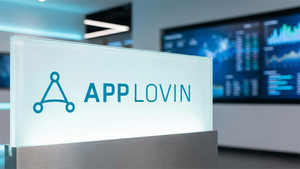Helping Children Develop Healthy Device and Media Habits

SPONSORED CONTENT -- (StatePoint) What are TikTok’s privacy settings? Can parents control what advertising their children see on Facebook? How do parents limit the amount of time their children spend on Instagram?
A new parent tool, the Glossary of Digital Media Platforms, offers the answers and will be handy for parents of children trying out new phones or other tech-related holiday gifts. The American Academy of Pediatrics Center of Excellence on Social Media and Youth Mental Health developed the free resource, which contains detailed information on popular digital platforms, including Apple, Discord, Facebook, Instagram, Pinterest, Snapchat, TikTok and X, with more to come.
“Parenting around media can be so challenging,” said Jenny Radesky, MD, FAAP, co-medical director of the Center of Excellence. “Figuring out what apps and settings are best for your family is an important part of the conversation. At the center, we created the Glossary of Digital Media Platforms to make it a little easier for parents to learn about each app and figure out what settings and tools exist to keep their kid safe while connecting online.”
Users click on a platform to learn about its default and customizable safety settings; messaging and friending controls; screen-time management settings; parental controls and more.
Parents aren’t the only ones looking for assistance when it comes to the online world. Pediatric providers, teachers and others who work with children and teens can introduce the glossary briefly during clinic visits, back-to-school nights, in newsletters, or other communications and encourage families to have conversations about safe and balanced relationships with social media. The tool can also facilitate conversations on concepts like private versus public accounts, time limits and how to block or filter upsetting content.
Here are some examples of how the glossary can be used:
• If children have iPhones, parents can learn more about the Family Sharing feature, which includes settings to limit who a child can contact, downtime/do-not-disturb settings and the Ask To Buy option that requires a parent to approve purchases.
• If social media and notifications are distracting teens at night, families can use the glossary to look up apps and how to silence notifications or activate other nighttime settings.
• For teens who are stressed out by negative content on social media feeds, the glossary contains information on tools to curate feeds and block and filter content.
• If a child’s school has a phone policy, families can look up device or app settings to silence distracting apps during school hours.
The glossary joins a roster of resources available at Center of Excellence on Social Media and Youth Mental Health, which includes conversation starters for parents concerned about how their children are using social media. The center’s activity cards can help young children build healthy relationships with media and their devices before they grow into teens and young adults.
Megan Moreno MD, MSEd, MPH, FAAP, co-medical director of the Center of Excellence, urges parents and other adults to avoid taking a doom-and-gloom approach when talking about the sometimes-dangerous social media landscape with kids.
“We can give ourselves grace for these initial reactions of worry and fear, but we have a choice to make on what we want our reaction to be going forward,” Dr. Moreno said. “We can choose open-mindedness. We can choose curiosity. We can choose evidence over hype, and we can stay centered on our children and families.”
*****
Photo Credit: (c) stockphotodirectors / iStock via Getty Images Plus
More News
View More




Recent Quotes
View MoreQuotes delayed at least 20 minutes.
By accessing this page, you agree to the Privacy Policy and Terms Of Service.